
While driving yesterday I heard about an interesting news story on the local conservative talk radio station. Basically, the Mexican father of a 14 year old daughter was arrested by California authorities for selling his 14 year old daughter’s hand in marriage to an 18 year old man. Apparently in Oaxaca (pronounced Wa-ha-ka), a state in Mexico, such practice is normal.
Marcelino de Jesus Martinez, 36, of Greenfield, California, was arrested Monday and booked into the Monterey County Jail, Greenfield police said in a statement. He faces felony charges of receiving money for causing a person to cohabitate, police said.
Martinez had arranged through a third party to have his daughter marry the older teenager, identified by authorities as Margarito de Jesus Galindo, of Gonzales, California. In exchange, Galindo was to pay Martinez $16,000 and provide him with 160 cases of beer, 100 cases of soda, 50 cases of Gatorade, two cases of wine, and six cases of meat, Greenfield Police Chief Joe Grebmeier told CNN.
In the Oaxacan community, such an agreement is “normal and honorable,” he said. “In California, it’s against the law. [Source]
The story is interesting because the novelty of the situation seems to have forced people to actually think about what it means to be a melting pot or an integrated community.?The questions being asked on the?show?I was listening to were the same questions that are asked of Sikh religious practices: Where do we stop being accommodating and begin enforcing laws that protect people? How do we respect culture and enforce laws?
 In 2006, Kawaljeet Tagore was fired for refusing to remove her kirpan. This month, she has filed a lawsuit, along with the Sikh Coalition and Becket Fund, against the IRS.
In 2006, Kawaljeet Tagore was fired for refusing to remove her kirpan. This month, she has filed a lawsuit, along with the Sikh Coalition and Becket Fund, against the IRS.
Kawaljeet Tagore, a Sikh American, sued the Internal Revenue Service (IRS) in Houston federal court on Jan. 6 claiming the IRS discriminated against her by prohibiting her from wearing a kirpan, a mandatory article of faith, on her job as a revenue agent at the Mickey Leland Federal Building in downtown Houston. [link]
The case is significant for a few reasons, but this is the first time someone has litigated the right to wear the kirpan specifically in a work-context. There have been other incidents (and sometimes cases) in which a Sikh’s right to wear the kirpan in an educational setting or in a vehicle or place of public accommodation has been disputed and resolved.
As Lohiri season approaches us, the issue of gender equity was once again resurfaces. Some families will celebrate Lohiri for their daughters to show there is no difference, while others will keep it as a boy tradition. I think we should also reflect on the fact gender equity isn’t just solved by equal celebrations when from the beginning we don’t even allow daughters to be born. How many celebrations will “make-up” for the gross in-balance between the male-female ratio in our community?
The issue of female feticide in the South Asian community is an infamous issue. We have heard about the studies in India, Punjab’s high ranking, and the SGPC’s desire to raise unwanted daughters. The common source cited for killing female children is abortion- just never letting them be born. However, the issue is also prevalent in the South Asian Diaspora in America. According to The Mercury News, Indian families are 58 percent more likely to have a son after having three daughters, compared to the natural 51 percent chance.
The dance continues. India’s infamous Central Bureau of Investigation just made a trip to the US to record testimony from two witnesses who identified Jagdish Tytler as an organizer of three days of violence in 1984 against Sikhs in Delhi.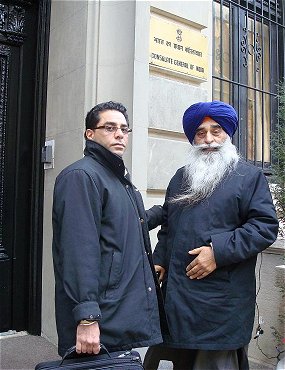
A team from India’s Central Bureau of Investigation came to the U.S. Dec. 22-26 to take testimony from two key witnesses who allege that former Union Minister Jagdish Tytler organized three days of violence against Sikhs in New Delhi 1984, following the assassination of Prime Minister Indira Gandhi. [India West]
Jasbir Singh, one of the men whose testimony was taken, was a witness before the Nanavati Commission in 2004. The Nanavati Commission found that there was sufficient evidence against Tytler to open an investigation against Tytler. However, the CBI closed the investigation last year claiming that it couldn’t find the witnesses.
The Nanavati Commission concluded that sufficient evidence against Tytler existed to launch an investigation. The CBI had closed the case against Tytler — still a prominent member of the Congress party — last September, saying it could not find the witnesses. It reopened the case after several media reported that Jasbir Singh was residing in Fremont, Calif. [India West]
Co-blogged by Phulkari and Sundari
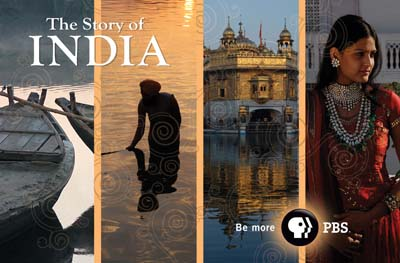 Perhaps like many of you, last night was spent watching The Story of India – a BBC series being aired on PBS. The six-part series (which our UK langarites may have already seen as it was aired in the UK in 2007) is narrated by historian Michael Wood and covers 4,500 years of the subcontinent’s rich history.
Perhaps like many of you, last night was spent watching The Story of India – a BBC series being aired on PBS. The six-part series (which our UK langarites may have already seen as it was aired in the UK in 2007) is narrated by historian Michael Wood and covers 4,500 years of the subcontinent’s rich history.
The first two episodes aired last night. Episode One, aptly titled Beginnings, takes us on a journey through India, tracing the incredible richness and diversity of its people, cultures and landscapes. Through ancient manuscripts and oral tales the documentary charts the first human migrations out of Africa.
In Tamil Nadu the latest DNA research takes him to a village where everyone still bears the genetic imprint of those first “beachcombing incomers”-the “first Indians” who went on to populate the rest of the world excluding Africa. [link]
As Wood aptly says, “Mother India indeed”.
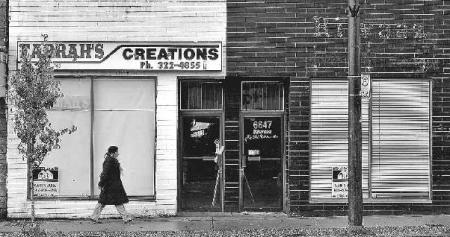 This holiday season I noticed the pinched expressions on people’s faces, the emptier stores, the going out of business sales, and the general air of unease and uncertainty as we round out of the holiday season and into a worsening (economically) new year.
This holiday season I noticed the pinched expressions on people’s faces, the emptier stores, the going out of business sales, and the general air of unease and uncertainty as we round out of the holiday season and into a worsening (economically) new year.
Over the past few weeks, the NYT has been covering how the recession has impacted small businesses, which tend to operate under situations that make them more sensitive to the need for liquidity than larger corporations.
Even companies…, whose products and services are in demand, are being ensnared in the deepening recession…
Some 60 to 80 percent of new jobs [in the U.S.] come from small businesses, Mr. Keating said, and more than 50 percent of private sector gross domestic product is created by small business. [link]
The damage, however, is not just localized. As the slowdown in the U.S. economy drags other world economies down, slow times have also impacted small business owners in immigrant communities, including Vancouver’s Punjabi Market:
“I don’t see much of a future here,” said Virani, who is considering closing her shop.She isn’t alone. At least 10 storefronts between 48th and 51st avenues are papered over and displaying For Rent signs.
Lakh Lakh Vaidhayan!
On behalf of the TLH family, I’d like to wish all our readers the very best for 2009.

“Devotees throng the fog-covered holy Sikh shrine of Golden Temple in the northern
Indian city of Amritsar to offer prayers for the New Year January 1, 2009.” [Link]
As we approach the calendar year 2008, it also marks a year of our existence.
Looking at our top 10 posts in terms of the number of hits, I guess it is sort of a mixed bag on how The Langar Hall is finding its voice. Our top hit getters were usually part of the “first comers” rule. Our bloggers were the first to put up the Kenneth Cole Sikh Ad and our comment board became a one of the first internet hubs for fans to mourn the loss of Ishmeet Singh.
Still our breakthroughs, in my opinion, were our original commentary that sparked various discussions – whether it was about Sikhs and the Media in “Will the Revolution be Televised?”, the issues of drug distribution in our community in the still popular Balbir Dhami article, looking at the role and effects of Punjabi Sikhs in the ensuing mortgage crisis, or even in creating our desi list in “Sikh Medicine.”
For the full list, see below the fold:
Although other bloggers have touched upon different aspect of Christmas and the holiday season, while viewing Sepia Mutiny I saw an interesting video of the NORAD-tracked Santa at the Taj Mahal.
However, at the end of the video (cue to :24), I couldn’t help but notice a very familiar Sikh site. Heading north through Punjab, it seems that the NORAD tracking has Santa flying through the Darbar Sahib complex. While they never show Harmandir Sahib (incorrectly called the Golden Temple), they do show Santa flying by the the Langar Hall, passing next to the Ramgharia Bunga, above the Langar Deori, making a quick right that allows us a great view of the Ghanta Ghar Deori, and in the distance the Akal Takht and kesri Nishan Sahib.

Have a wonderful weekend!
 Are how I usually spend December 25th (unless, like this year, Gurpurab services fall on the same day). When I was younger, my family and I would spend the week of Christmas collecting items for donation, volunteering with the local soup kitchen, and generally reflecting on, and brainstorming, how we could help others during a sometimes lean time of year. I like to think this tradition has morphed as I’ve grown older (into a year-long commitment to service), but something about December always makes me feel more thoughtful.
Are how I usually spend December 25th (unless, like this year, Gurpurab services fall on the same day). When I was younger, my family and I would spend the week of Christmas collecting items for donation, volunteering with the local soup kitchen, and generally reflecting on, and brainstorming, how we could help others during a sometimes lean time of year. I like to think this tradition has morphed as I’ve grown older (into a year-long commitment to service), but something about December always makes me feel more thoughtful.
My parents also went out of their way to explain that as Sikhs we did not celebrate Christmas, but they explained the significance of the Sikh religious holidays that tend to fall around this time of year. I didn’t feel like I had to trade — presents were not really an expectation or feature of the season after I passed the age of 7. Instead we spent loooooong hours at the gurdwara for services.
Two steps forward and one step back. Just when you think we’ve made some progress in terms of creating awareness about who we are as Sikhs, you hear of incidents like this. Here’s the story on NBC’s KGET.

Today many Sikhs in Southern California will celebrate Guru Gobind Singh Ji’s Gurpurb. When I think of Guru Gobind Singh Ji, the first thing that comes to mind is the creation of the Khalsa as an army of the pure.
This past summer I was sitting in a group-discussion, with fellow 2nd generation Sikhs (amritdhari and non-amritdhari) in the West, where we were asked to share the first thoughts that came to mind when we thought of the term “Khalsa”. Here are some:
masculine, extremists, ego, amrit, air india bombings, khalistan, rules, khandha/militaristic, collective brotherhood, fiercely independent, love, panj pyare, historical of the past & raj karega khalsa
For myself, I thought it was interesting to see how the media (i.e. newspaper articles, calendars, and television) along with the politicalization of religion and translation of Sikhi between generations is influencing our perceptions of the Khalsa.
What are your thoughts? What do you think they reflect about the state of the Khalsa?
 I saw this article?on BBC online and thought I’d share it with your guys. Basically, the BBC did a composite of six interviews with people of non-Christian faiths and asked them how they spend the time they have off for Christmas.
I saw this article?on BBC online and thought I’d share it with your guys. Basically, the BBC did a composite of six interviews with people of non-Christian faiths and asked them how they spend the time they have off for Christmas.
The Sikh interviewee noted that during this time of year, Sikhs mark the martyrdom of the Sahibzadey and that it is important to remember the significance of our holidays. Agreed.
Last year Anandica wrote a post about Santa Singh and the Khalsa Tree and explained how some families have incorporated Western traditions into Sikhi, to give new meaning to common symbols, but what about Sikhs participating in the religious celebrations of others?
During this holiday season of hard times, not even houses of God have been spared. Some lenders believe more churches than ever have fallen behind on loans or defaulted this year. Some churches, and at least one company that specialized in church lending, have filed for bankruptcy. Church giving is down as much as 15% in some places, pastors and lenders report.
An article in today’s Wall Street Journal highlights the financial pressures being faced by many churches across America. From my perspective, there’s two implications for Sikhs here, one a threat and the other an opportunity.
“There have been too many churches with a ‘build it and they will come’ attitude,” says N. Michael Tangen, executive vice president at American Investors Group Inc., a church lender in Minnetonka, Minn. “They had glory in their eyes that wasn’t backed up with adequate business plans and cash flow.”
 The phone rings and its the call you dread as an uncle or older cousin. A desperate parent is on the other end asking for your help. Your teenage nephew/cousin wants to cut his hair. Can you please talk some sense into him.
The phone rings and its the call you dread as an uncle or older cousin. A desperate parent is on the other end asking for your help. Your teenage nephew/cousin wants to cut his hair. Can you please talk some sense into him.
This happened to me last week with my cousin and, I have to admit, I was woefully unprepared. While I’ve given lots of talks on Sikhi at Sikh camps and to non-Sikh audiences, I’ve never had to actually have this kind of discussion. One where I may be the determining factor in an individual’s major life decision.But what could I offer that he hadn’t already heard? How could I change the mind of a guy that’s already decided? He’s grown up in a Sikh family, his entire family keeps their hair. He has lots of Sikh friends and lives in a Sikh part of town. He should have picked up Sikhi through osmosis, but he hasn’t.
His parents have tried their best but working multiple jobs and struggling financially, putting food on the table has been their priority. And like many Punjabi Sikh parents, they’ve assumed that being surrounded by Sikh culture would be enough. So they’re shocked, betrayed, angered, hurt and deeply saddened when they’re son finally musters up enough courage to talk to them.
Yes, a company called IndiaNIC has developed a Sukhmani Sahib iPhone application. For $0.99 you can download the entire Sukhmani Sahib and with a single swipe, read through it on your iPhone. Information about this application reads,
This iphone book has following features:
– Full Sukhmani Sahib in Hindi Language
– No need for internet connectivity to view content
– Each page changes with swipe and button options
– No need of Language Setting
– Elegant Layout & Cool Design
– Easy to carry everywhere you go
 No, you did not read incorrectly. This Sukhmani Sahib is in Hindi and not Gurmukhi as … perhaps would be expected? There are few different questions that come to mind when trying to assess why the company chose to publish this application in Hindi. Who is their target audience I wonder? Are there many non-Sikhs who read Sukhmani Sahib (that’s great if that is the case!)? We’ve had the debate before about whether Punjabi is a diminishing language – so I wonder how much of that plays a role in this initiative. (I know, I know, I seem to be full of many questions and few answers). With the growing popularity of mobile-based content, it is nice to find these Sikhi focused applications. Mr. Sikhnet recently discussed his efforts and the need to develop applications for mobile phones. I assume there will be challenges associated with transitioning texts such as Sukhmani Sahib, which are predominantly read by using gutkas to reading Gurbani on your iPhone while you’re waiting for the bus. Personally, I think that Gurbani should be accessible to all and whether it is read in a gutka or on your mobile phone screen should not be important. Those individuals who do not already have an interest in learning Gurbani will probably not download this application anyway. It is likely targeted at those who are wanting to learn and if it so happens to be on an iPhone, then I don’t necessarily think that’s a bad thing. Nevertheless, I am still wondering about the choice of Hindi….
No, you did not read incorrectly. This Sukhmani Sahib is in Hindi and not Gurmukhi as … perhaps would be expected? There are few different questions that come to mind when trying to assess why the company chose to publish this application in Hindi. Who is their target audience I wonder? Are there many non-Sikhs who read Sukhmani Sahib (that’s great if that is the case!)? We’ve had the debate before about whether Punjabi is a diminishing language – so I wonder how much of that plays a role in this initiative. (I know, I know, I seem to be full of many questions and few answers). With the growing popularity of mobile-based content, it is nice to find these Sikhi focused applications. Mr. Sikhnet recently discussed his efforts and the need to develop applications for mobile phones. I assume there will be challenges associated with transitioning texts such as Sukhmani Sahib, which are predominantly read by using gutkas to reading Gurbani on your iPhone while you’re waiting for the bus. Personally, I think that Gurbani should be accessible to all and whether it is read in a gutka or on your mobile phone screen should not be important. Those individuals who do not already have an interest in learning Gurbani will probably not download this application anyway. It is likely targeted at those who are wanting to learn and if it so happens to be on an iPhone, then I don’t necessarily think that’s a bad thing. Nevertheless, I am still wondering about the choice of Hindi….
So the other day on an NPR report (I don’t have a link, you will just have to take my word for it), a Latino immigrant man shared his own prejudices that have developed as he has achieved his “American Dream”. He spoke about how easily he began to forget the difficulties he encountered while “making it” in America as he nestled into his comfortable middle-class life.
From newspaper and pizza deliver-man to gardening and fast-food service, *he said his now comfortable middle-class lifestyle as a Network Engineer had made him blind to his own prejudices. He realized this when he went on a trip to DC and encountered an elderly blind African-American woman who sat under a monument with her hand out. He immediately thought she was begging for money and reached down into his pockets and emptied out all the change he had into her hands. Something many of us would consider an act of kindness rather than prejudice. However, the woman turned to him and said that she didn’t need his money … she only needed him to guide her to the nearest post-office. After guiding her to the post-office, he was grateful to this woman for helping him see his own prejudices that had long blinded him.
He went on to say that a major part of the “American Dream” he had forgotten about was to never become immune to the emotional pain of the prejudice one encounters as an immigrant striving to achieve the Dream. For example, the pain of having parents tell their children, “you never want to be a pizza-delivery man like him” in front of his face without knowing the circumstances that put him in that position (i.e. he was earning money to help pay for college and the family bills).
* Sorry, I forget his name and feel awkward using a pseudonym … so please bear with the repetition.
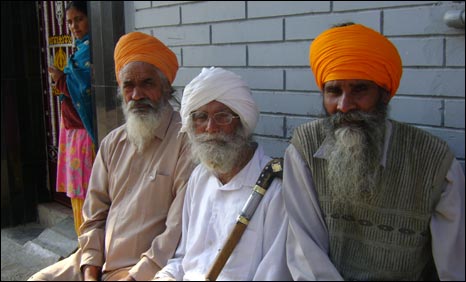 The World Bank estimates that nearly six millon Indians working abroad sent $30 billion home in 2008. Of those, it is estimated that Punjabi non-resident Indians sent between $150 million to $160 million. It should come of no surprise that Punjab is feeling the ramifications of the global economic downfall (Maple Leaf Sikh recently blogged about the impact on Canada’s Punjabi community). Many migrants have learned to live frugally within their host countries so that they can save as much as possible to be able to send the money back home to Punjab. In turn, Punjab relies heavily on income invested back into the region by it’s migrants. Take Pyara Singh for example. He has been living in Germany for the past 14 years while his parents, wife and two children live in Giljian, Jalandhar.
The World Bank estimates that nearly six millon Indians working abroad sent $30 billion home in 2008. Of those, it is estimated that Punjabi non-resident Indians sent between $150 million to $160 million. It should come of no surprise that Punjab is feeling the ramifications of the global economic downfall (Maple Leaf Sikh recently blogged about the impact on Canada’s Punjabi community). Many migrants have learned to live frugally within their host countries so that they can save as much as possible to be able to send the money back home to Punjab. In turn, Punjab relies heavily on income invested back into the region by it’s migrants. Take Pyara Singh for example. He has been living in Germany for the past 14 years while his parents, wife and two children live in Giljian, Jalandhar.
Pyara Singh is on his annual visit home from Hamburg, Germany, where he works as a cook in a pizzeria… In this village of 300 homes, almost every family has sent one or more of its members to foreign shores. And the remittances they have sent back over the years have helped the residents here live a life of affluence that many in India can only dream of. Many of the houses have been built in the last few years and most are large. Some have expensive SUVs parked in their front yards. The conversation here is peppered with references to children and grandchildren making a living in the US, Canada, UK, Germany, Italy, France and Belgium. [link]
It is becoming starkingly clear that the global economic downturn has made individuals and communities more conscious of living within their means. Like the rest of the world, Punjab will also be struggling to make ends meet under its own circumstances.
A lack of industry and the outbreak of Sikh militancy in the 1980s also contributed to the flight of people to unknown shores in search of better prospects. “During the militancy, shiploads of men from Punjab fled to other countries and settled down there after getting political asylum. In time, they took their families and then friends and acquaintances too,” says Major Singh, a journalist in Jalandhar. “Punjabis can do only two things – they either join the army or they migrate. They have a craze to go abroad. But they are very hard working and they adjust well wherever they are,” he says.
Reuters News Pictures Service (RNPS) recently announced its images of the year for 2008. One of them is the following picture taken of “Gurmeet Singh, 72, a Sikh, work[ing] on a hand written version of the ‘Guru Granth Sahib’ (the holy book of Sikhs) in the northern Indian city of Amritsar.”
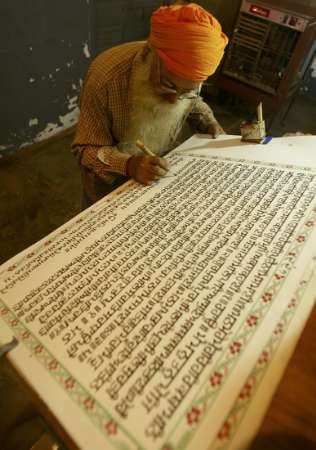
I also enjoyed — and wanted to share — these Reuters images of gold medallist Abhinav Bindra and of the Golden Temple.
In the Sikh tradition, shoes have a particular connotation. When we enter the Gurdwara we take them off (and somehow it is noteworthy when a the Sheriff takes them off when visiting a Houston Gurdwara); before entering our homes we often take them off; and one of the worst insults is to get beat by a shoe. I know I have been threatened many times.
By now you may have already seen this video that is the talk of the world. Since in The Langar Hall you are usually required to take off your shoes, we wonder if it gets this much attention. Enjoy the instant replays and slow motion analysis!

If you must, here is an actual article on George Bush, Iraq, the Arab journalist, and the shoe thrown ’round the world.

